How to create a music app like Spotify?
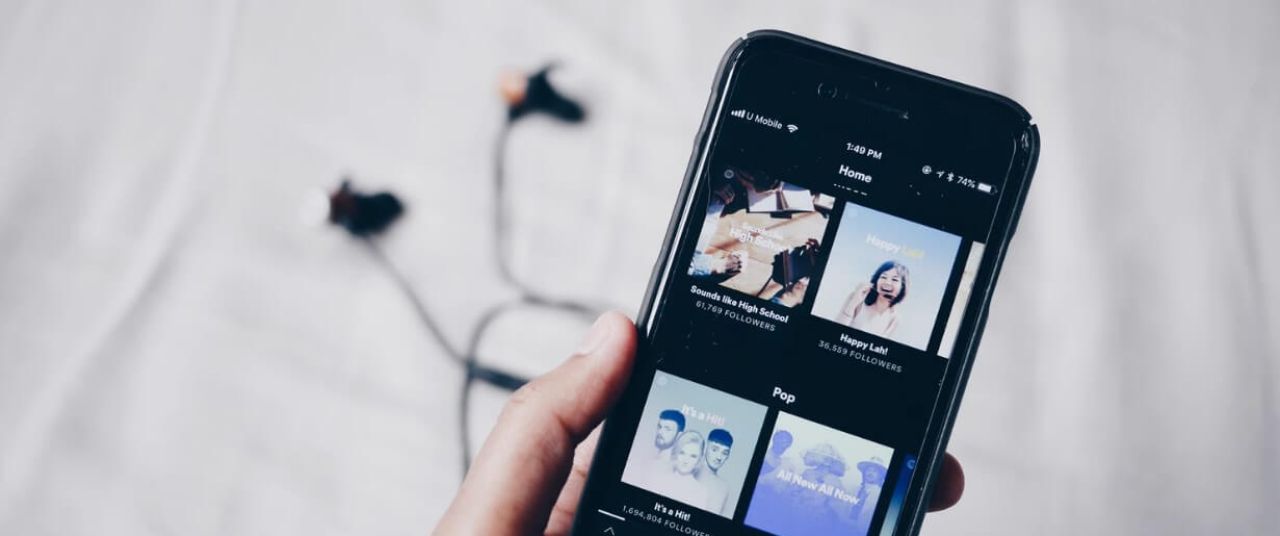
Music streaming is a hot business niche. Music streaming apps seem simple and available to anyone until you begin to consider how to make a Spotify app clone for your own business needs. What about development? Should you copy an existing model or create your own?
In this post, we’ll outline Spotify’s features and tech stack, explain how it works, and calculate how much it costs.
What is Spotify?
Spotify is a digital music, podcast, and video streaming service that provides access to more than 35 million songs. The idea behind it belongs to two friends, Daniel Ek and Martin Lorentzon, who came up with it while sitting in a barren apartment in Stockholm. The Spotify service was officially launched on October 7, 2008, with startup funding provided by Horizons Ventures and Wellington Partners.
According to its report for Q1 2018, Spotify has 170 million monthly active users, 75 million of whom are paying subscribers. Its total revenue for the quarter was €1,139 million, with premium revenue of €1,037 million, and it shows no sign of slowing down.
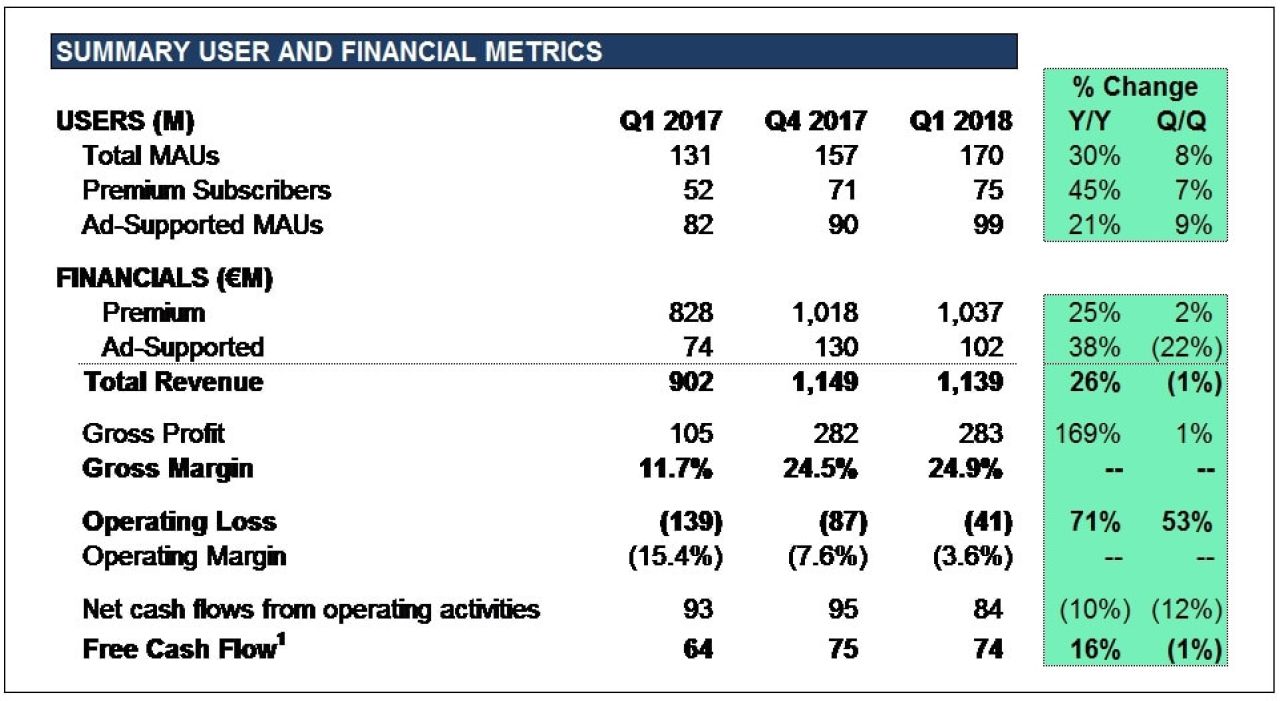
Essential features of the Spotify app
User profiles and authorization. Register and log in using an email address or social media accounts.
Audio streaming. Provides stable online access to music files through cloud storage.
Search and organize. Find an artist and listen to their songs or albums.
Song replay. The app enables users to replay their favorite songs repeatedly.
Playlists. Save, edit, listen, and share, both online and offline.
Artist descriptions using emoji. The emoji most associated with 5000 most emoji-ed artists.
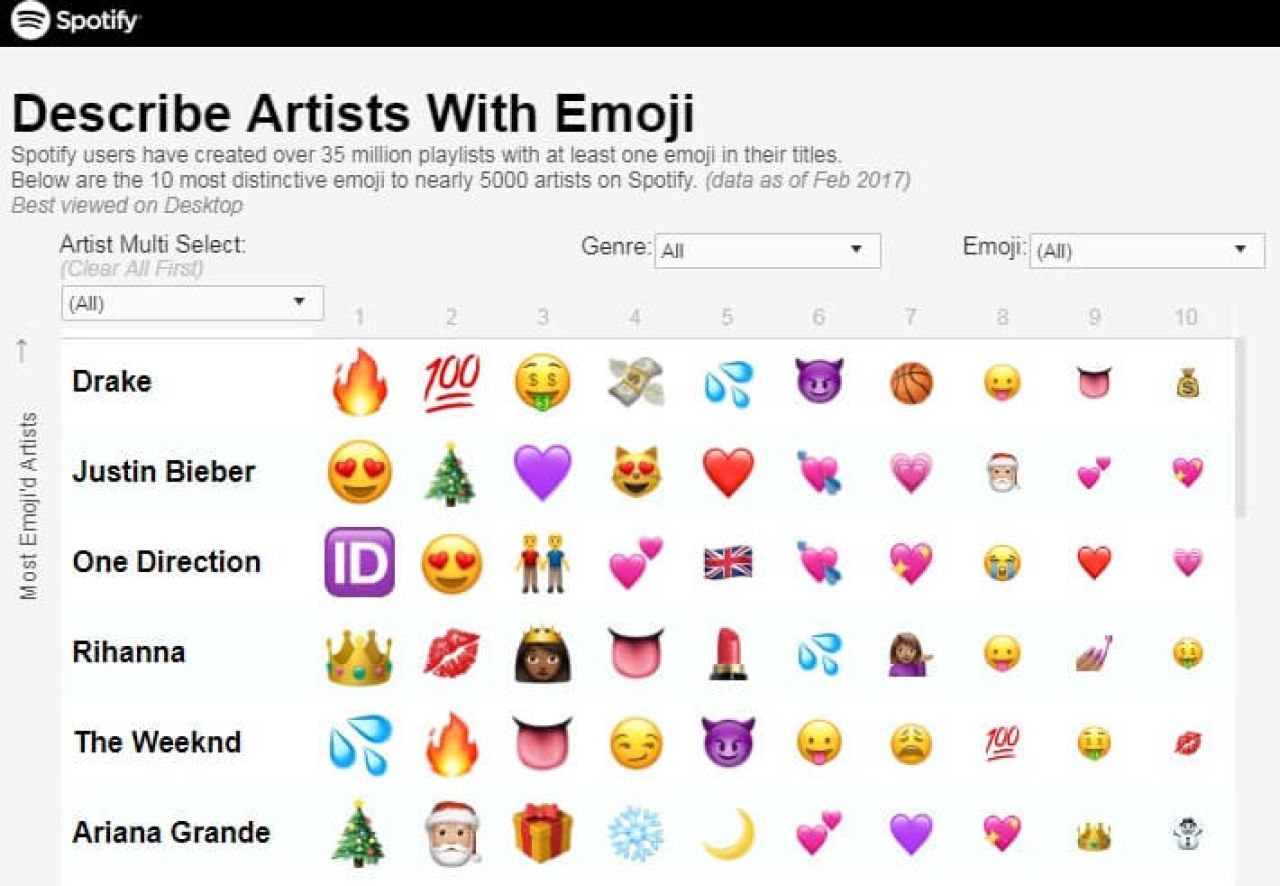
Offline mode. Save music to devices or cache files.
Social integration. Spotify is integrated with Facebook, allowing users to share songs or playlists with friends and see what others are sharing, privately or publicly.
Notifications. Get news from friends, artists, and the community.
Platforms. Spotify supports most devices, including Windows, MacOS, Linux and mobile systems for iOS and Android.
Radio. Clicking the radio button and selecting the music genre at the bottom of the page will start the “radio station,” which can be paused, rewound or listened to in fragments.
Availability. Spotify covers over 60 countries in Europe, the USA, New Zealand, Australia, and parts of Asia and Africa. Coverage is limited by licensing issues.
Spotify Connect. Provided it’s compatible, users can stream their music to any speaker over Wi-Fi.
In-app dialog. Having discovered a song, you can share it with a friend.
Ticket sales. Users can buy concert tickets right from the app.
Shazam integration. Use Shazam to identify the music around you, then use Spotify to play and save it.
Like or dislike. Listening to a playlist or the radio, you can quickly like or dislike a song.
Private sessions. Several options allow users to hide what they’re listening to.
Audiographic map. The app allows users to listen to the music other users are currently listening to.
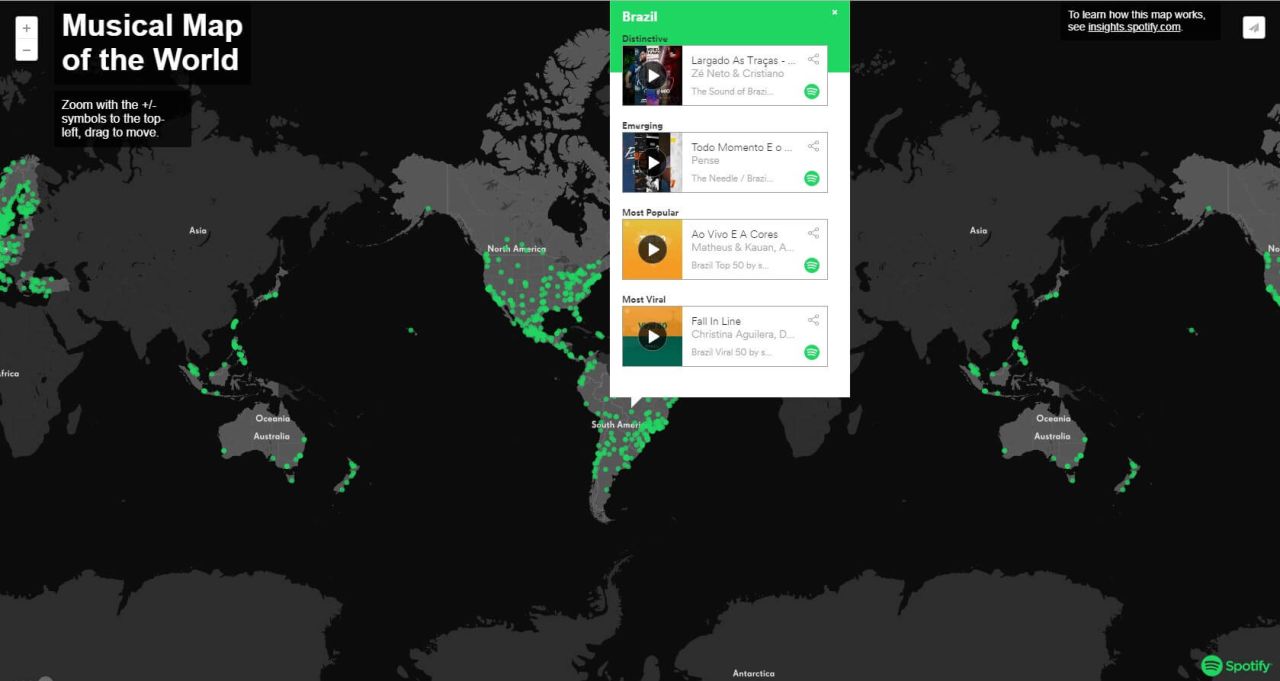
https://spotifymaps.github.io/musicalcities/
Last.fm integration. Users can scrobble from within Spotify by entering their Last.fm username and password on the Preferences page and selecting the “Scrobble to Last.fm” checkbox.
Audio settings. Users can improve the audio quality by adjusting the quality setting upwards or keep data usage down by listening to low bit-rate songs.
Equalization feature. The bass, mid-range, and treble bands are adjustable.
How to recreate Spotify: Steps to think through
If you want to develop a streaming app, you need to think about the following issues, which may present challenges.
Licensing
Spotify obtains two classes of license for the music it distributes:
- Sound Recording License Agreements, which cover the rights to a particular recording.
- Musical Composition License Agreements, which cover the people who own the rights to a song.
Recording licenses. For the rights to the actual recordings, Spotify has deals with the three largest record labels: Universal Music Group, Sony Music Entertainment Group, and Warner Music Group.
The app also has a deal with the Music and Entertainment Rights Licensing Independent Network for digital recordings from independent labels.
Composition licenses. Within this category, there are two main types of license Spotify has to secure: performance rights and mechanical royalties. Performance rights are paid to song publishers and managed through two main firms in the US: BMI and ASCAP. Mechanical royalties are paid to songwriters when a song is reproduced, whether that occurs physically on a CD or vinyl, or through streaming.
There are other types of licenses and sub-licenses as well.
Design
The mobile design matters in every project. It’s important to note that music app design has always been a little different. To achieve a state-of-the-art look, you have to choose a professional designer or design team. If you need some inspiration, check out Dribbble or Behance.
Monetization strategy
Spotify makes money from two sources:
- Spotify supports different kinds of advertisements: Sponsored Playlists, Branded Moments, Sponsored Sessions, Audio, Video Takeovers, Display, Homepage Takeovers, Overlay, Advertiser Pages, and Branded Playlists. These ads vary in type, size, and user engagement.
- Premium subscription. This provides subscribers with free access to unlimited music across all their devices. Users can also temporarily download songs for offline listening and play music at the very highest quality. Subscriptions are offered at varying rates.
Technology stack
Spotify clients and backend services communicate using the following paradigms: request-reply, messaging, and pub/sub.
The Spotify team used Python and JavaScript, Java, Clojure, and HTML5. For server-side logic, developers have used PHP. To cache files without having to retrieve them from servers again, Spotify offers a few different options: Cassandra, PostgreSQL, and Memcached. Here’s what the team has also utilized:
- Kafka for the event delivery system, which is based on Kafka 0.7
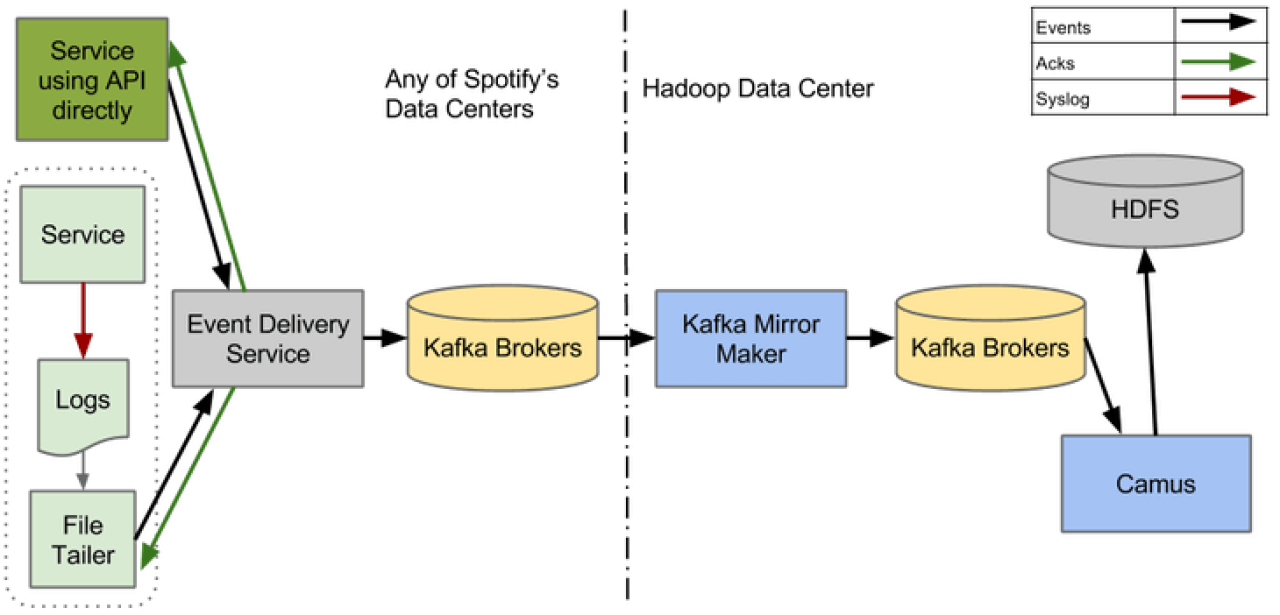
Event Delivery system based on Kafka 0.8
- GraphWalker for model-based testing and integration with Python services
- Amazon S3 for audio file storage and caching with CDNs
- Google Cloud Platform for platform infrastructure
- CEF for UI building
- Bootstrap and/or HTML5 for web app development
- Nginx as an open source HTTP and proxy server
Spotify uses C++ for Mac/Windows clients, Java for Android, and Objective-C for iOS applications.

Spotify currently runs over 100 production-level Cassandra clusters for data-driven configuration
All the features in the clients belong to a specific squad that is responsible for that feature across all platforms. If one fails, the other features of the clients are independent and will continue to work. This partitioning provides scalability, reliability, and an efficient way to focus team efforts.
We’ve also prepared a chart of the broad architecture of an audio streaming app like Spotify:
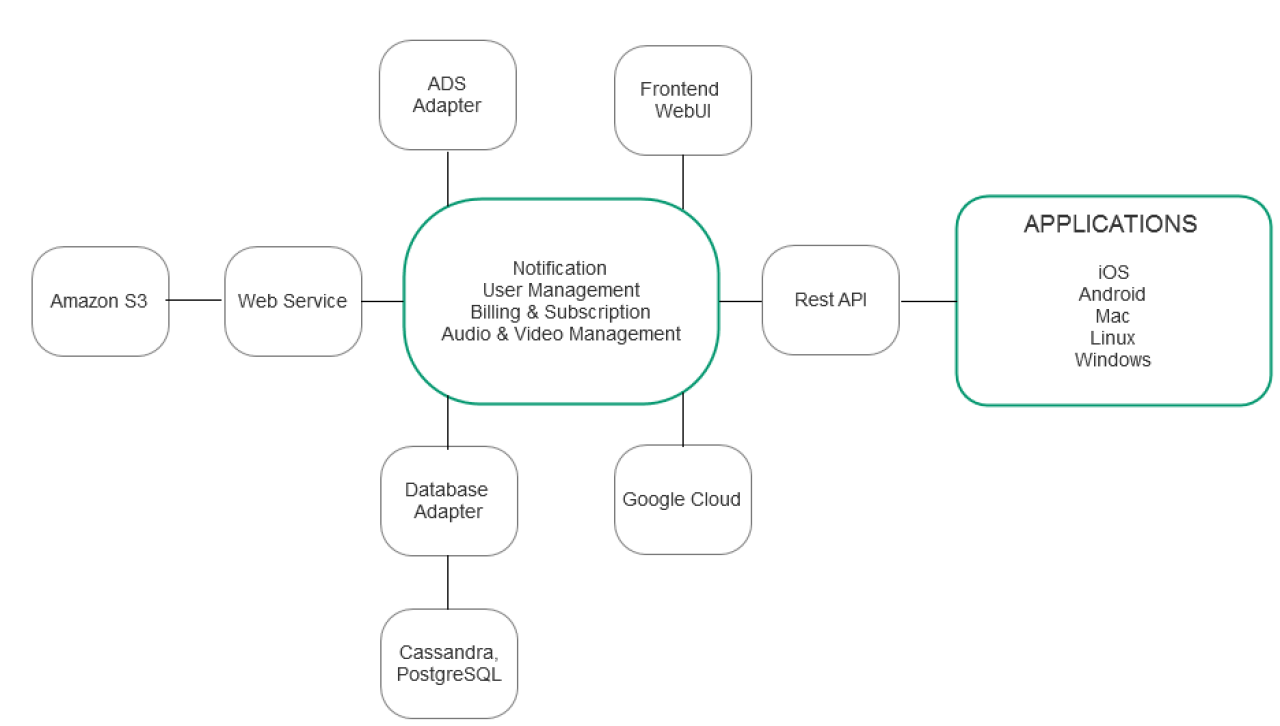
If you’d like to receive a full tech stack for a streaming application, please don’t hesitate to contact us at [email protected]. Now let’s take a closer look at the development cost.
How much does it cost to build an app like Spotify?
If you want to develop a music app like Spotify, you have to consider many factors, from design to development, streaming, music streaming licensing, and hosting costs.
The total project timeline can vary from 1400 to 2500 hours. That translates into a money equivalent of $70k or more depending on the features and the team’s hourly rates.
A music app would cost you:
- $70k for MVP with basic functionality only
- $90k+ for iOS music streaming app
- $105k+ for Android app
- $185k for multi-platform full-featured application
Let’s build your music app
Spotify alternatives are booming, and currently include Pandora, Deezer, iTunes, SoundCloud, and Google Play. Will you get a piece of the success?
Contact us today for an intuitive and fast streaming app solution for your business or enterprise as well as for commercial music app solutions.

 (7 votes, average: 4.86 out of 5)
(7 votes, average: 4.86 out of 5)



Vervelogic says:
Really informative piece on how to build a music streaming app.. Kudos to the author. Well explained piece which simplified the process